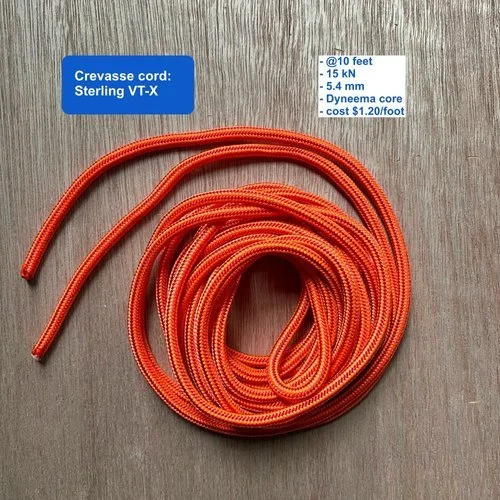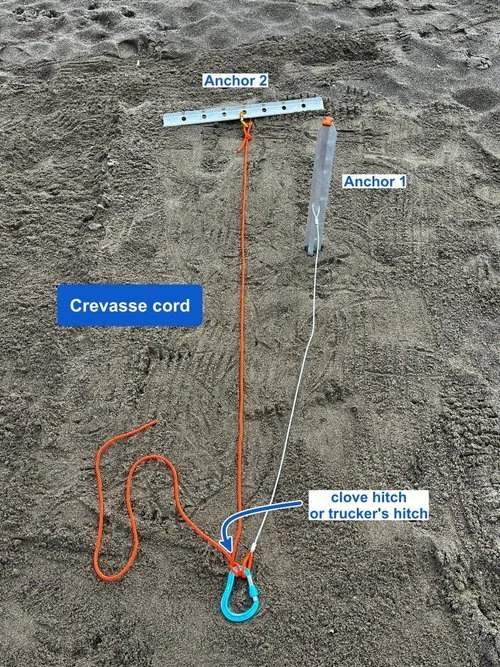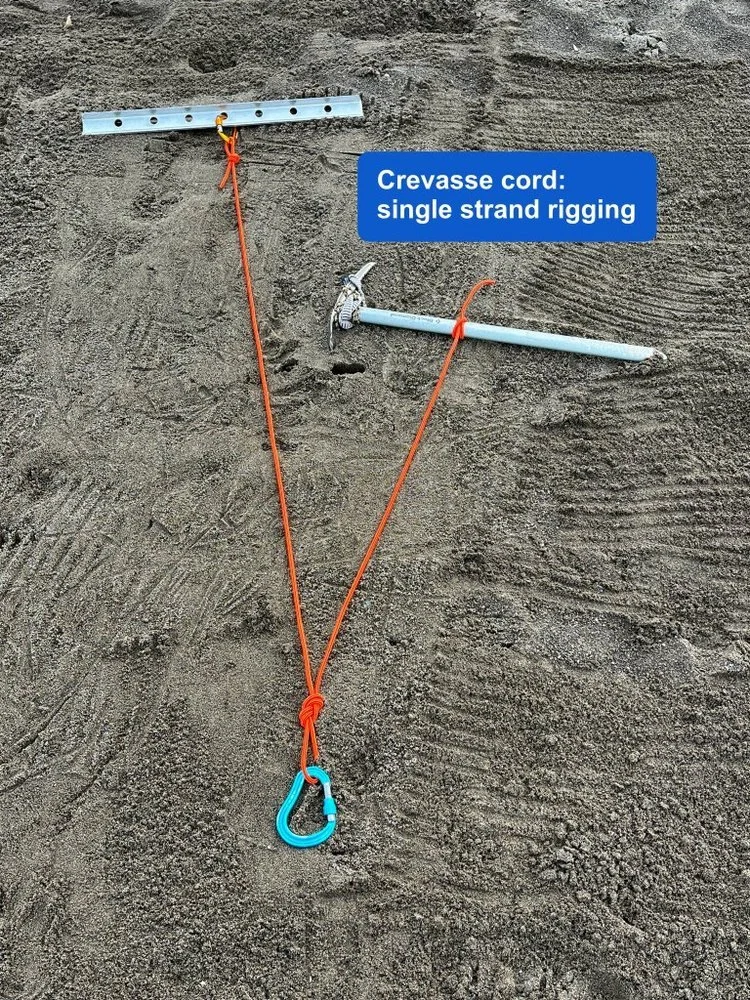The "crevasse cord"
For a long time, and without giving a lot of thought to it, I carried a pair of 120 cm slings or standard cordelette (about 5 meters of 7 mm cord) on glacier climbs.
Recently I’ve changed to a shorter, lighter, less bulky and more versatile tool. I call it “crevasse cord”.
It's 10ish feet / 3.5 m of V-TX cord, made by Sterling Rope. V-TX is impressive. It's just 5.4 mm and rated to 15 kN. It has a low stretch Dyneema core and a polyester sheath. It's fairly supple, which means it’s good for friction hitches. I carry it “open” or untied, not permanently tied in a loop with a welded double fisherman’s knot.
It's relatively inexpensive, about $1.20 per foot at my local climb shop.
Using a crevasse cord - friction hitch
As a friction hitch - Tie any friction hitch around the rope, usually a prusik or Klemheist. If you need a shorten the connection, tie an overhand knot.
Left photo: If you’re the unfortunate person in the hole, you can tie a friction hitch and use this as a foot loop to ascend the rope. (Please, stop carrying those old-school designated “foot prusiks”.)
Right photo: As a rescuer on top, you can use this as your primary connection to the anchored rope. Connect yourself to the hitch by passing the cord through your belay loop and tie an overhand knot. Cool, you’re now connected to the friction hitch and you saved a carabiner.
Using a crevasse cord - single point anchor building
If you build a T slot (aka deadman) anchor, you need at least about 4 feet or 1.5 m of sling or cord to connect the anchor to your master point. The crevasse cord is perfect. You can basket hitch the cord through a hole of a picket, or clove hitch it around a deadman such as an ice axe.
Using a crevasse cord - equalizing a loaded anchor
Often in a crevasse rescue scenario, you first place one anchor and then transfer the load to it. If conditions require it, you might want to back it up with another anchor.
However, this has a slight complicating factor: there’s already a load on the first anchor. This means it can be tricky to get equalization between the two points.
With the crevasse cord, it's easy. Build your second anchor, ideally fairly in line and fairly close to the first one, and tie a clove hitch or trucker’s hitch between the anchors. These hitches let you adjust tension and distribute the load fairly well.
Using a crevasse cord - “bunny ears” rigging
Because this cord is rated 15 kN, you can tie a bight knot in each end can use it “bunny ears” style, instead of being tied in a loop. This takes the approximate strength of the cord down to about 8 kN, which is still #SuperGoodEnough for crevasse rescue.
Standard 6 mm cord is only rated to about 7-ish kN. If you rig 6 mm cord bunny ears style, your strength is going down probably something around 3-4 kN, which is not strong enough for just about any climbing application.






